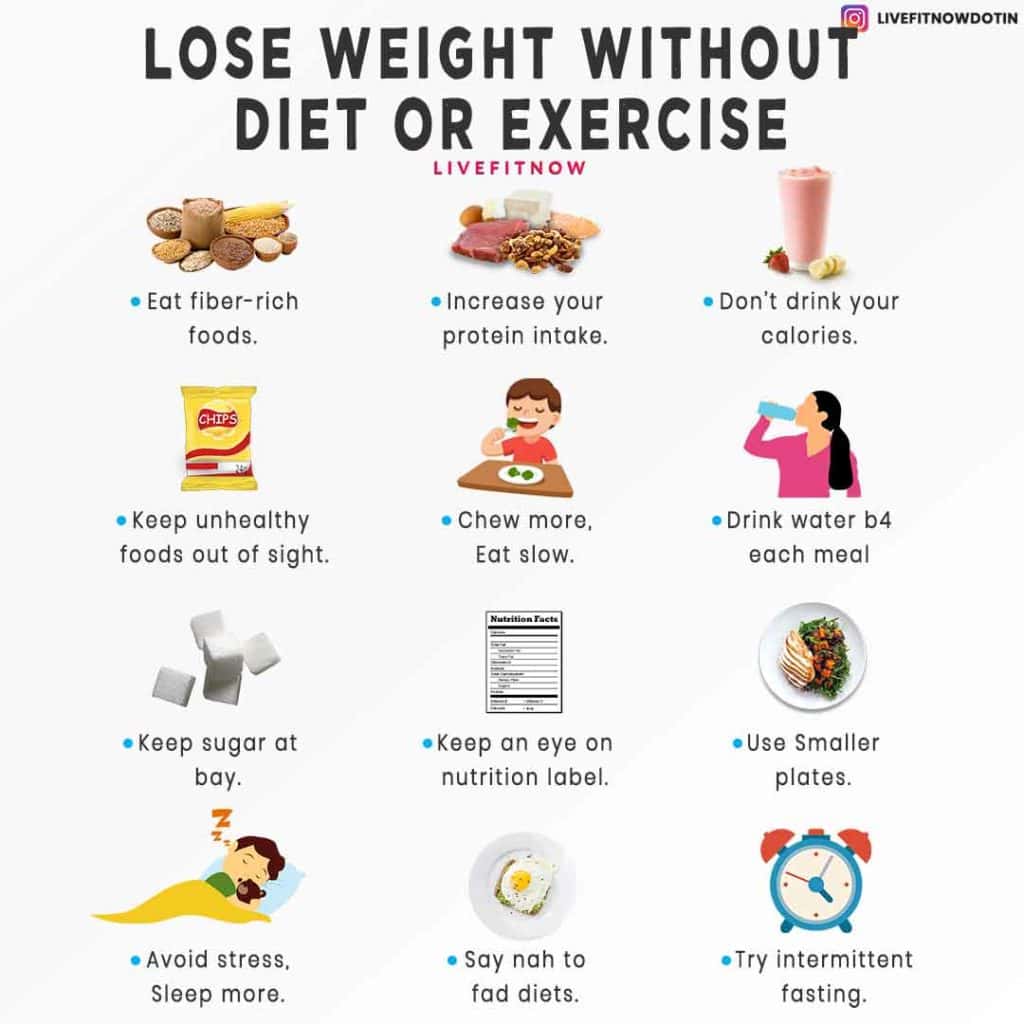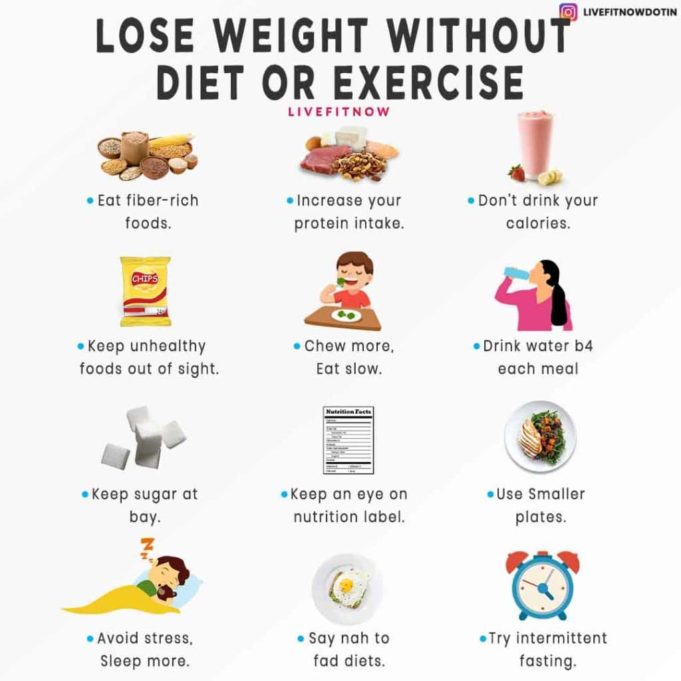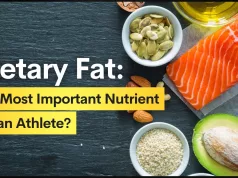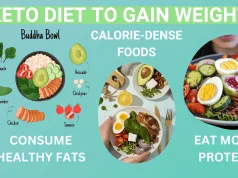How to lose weight without working out? It sounds like a dream come true, right? We all know that exercise is great for our health, but sometimes it can feel like an impossible hurdle to overcome. The good news is that you can shed those extra pounds without stepping foot in a gym.
This guide explores practical strategies for weight loss that focus on dietary changes, lifestyle modifications, and addressing the psychological factors that can sabotage our efforts.
By understanding the basics of weight management, making mindful dietary choices, and incorporating simple yet effective habits into your daily routine, you can achieve your weight loss goals without feeling overwhelmed. This isn’t about quick fixes or fad diets.
It’s about creating sustainable habits that support a healthier, happier you.
Understanding Weight Loss Fundamentals
Losing weight without exercise is possible, but it requires a fundamental understanding of how our bodies work and how we can influence them. It’s not about magic pills or extreme diets; it’s about making smart choices and building healthy habits.
The Relationship Between Calories In and Calories Out
The foundation of weight loss lies in the concept of calorie balance. Think of your body like a bank account for energy. You deposit energy through the food you eat (calories in), and you withdraw energy through daily activities and your metabolism (calories out).
To lose weight, you need to spend more calories than you consume.
For example, if you eat 2000 calories per day but only burn 1800 calories, the remaining 200 calories will be stored as fat. Conversely, if you consume 1800 calories and burn 2000 calories, you’ll lose weight.
The Role of Metabolism in Weight Management
Metabolism is the process by which your body converts food into energy. It’s like a furnace that burns fuel to keep your body running. The faster your metabolism, the more calories you burn at rest.
Factors influencing metabolism include age, genetics, muscle mass, and even the food you eat.
For instance, muscle burns more calories than fat, even at rest. So, while exercise can boost metabolism, even without exercise, building muscle through strength training can help increase your calorie expenditure.
Tracking Calorie Intake and Identifying Areas for Reduction
Knowing how many calories you consume is crucial for achieving a calorie deficit. There are several ways to track your intake:
- Food Diaries:Record everything you eat and drink, including portion sizes, for a few days. This gives you a clear picture of your eating habits.
- Calorie-Tracking Apps:Numerous apps like MyFitnessPal or Lose It! allow you to scan barcodes and track your meals. They can also help you set calorie goals and provide nutritional information.
- Online Calorie Calculators:These tools can estimate your daily calorie needs based on factors like age, gender, height, weight, and activity level.
Once you know your calorie intake, you can identify areas for reduction. This might involve:
- Cutting back on sugary drinks:These are calorie bombs with little nutritional value.
- Choosing lean protein sources:Protein helps you feel fuller for longer, reducing overall calorie intake.
- Replacing processed snacks with whole foods:Fruits, vegetables, and nuts are nutrient-rich and naturally lower in calories.
Diet Modifications for Weight Loss
Losing weight without working out requires a strategic approach to your diet. It’s not about starving yourself or following fad diets. It’s about making sustainable changes to your eating habits that promote healthy weight loss. This section will delve into the world of diet modifications, exploring balanced eating plans, popular weight loss diets, and a sample meal plan to inspire your journey.
Balanced Diet for Weight Loss
A balanced diet for weight loss focuses on consuming the right amount of calories and macronutrients (proteins, carbohydrates, and fats) to create a calorie deficit. This deficit forces your body to tap into stored fat for energy, leading to weight loss.Here’s a breakdown of a balanced diet for weight loss:
- Protein:Aim for 0.8 grams of protein per kilogram of body weight. Protein is essential for building and repairing tissues, keeping you feeling full, and boosting metabolism. Good sources include lean meats, poultry, fish, eggs, beans, lentils, and tofu.
- Carbohydrates:Choose complex carbohydrates over simple sugars. Complex carbs, like whole grains, fruits, and vegetables, provide sustained energy and fiber, which aids digestion and keeps you feeling full. Limit refined carbohydrates, such as white bread, pasta, and sugary drinks.
- Fats:Include healthy fats in your diet, such as those found in avocados, nuts, seeds, olive oil, and fatty fish. Healthy fats are essential for hormone production, cell function, and satiety.
It’s important to note that these are general guidelines. Your individual macronutrient needs may vary depending on factors like age, activity level, and health goals. Consulting a registered dietitian or nutritionist can provide personalized guidance.
Popular Weight Loss Diets
The world of weight loss diets is vast and varied. Here’s a look at some popular options, exploring their benefits and drawbacks:
Intermittent Fasting
Intermittent fasting involves cycling between periods of eating and fasting. It doesn’t dictate what you eat, but rather when you eat. Popular methods include the 16/8 method (fasting for 16 hours and eating within an 8-hour window) and the 5:2 method (eating normally for five days and restricting calories to 500-600 for two non-consecutive days).
- Benefits:Intermittent fasting can promote weight loss, improve insulin sensitivity, and reduce inflammation.
- Drawbacks:It can lead to hunger, fatigue, and potential nutrient deficiencies if not done properly. It may not be suitable for everyone, especially individuals with certain medical conditions.
Ketogenic Diet
The ketogenic diet, or keto diet, is a high-fat, low-carbohydrate diet that forces the body to enter a state of ketosis, where it burns fat for energy instead of glucose. This diet typically consists of 70-80% fat, 20-25% protein, and 5-10% carbohydrates.
- Benefits:The keto diet can promote rapid weight loss, improve blood sugar control, and reduce seizures in people with epilepsy.
- Drawbacks:It can lead to nutrient deficiencies, constipation, fatigue, and bad breath. It may not be sustainable long-term and can be challenging to follow due to its restrictive nature.
Mediterranean Diet
The Mediterranean diet is a lifestyle approach to eating that emphasizes fruits, vegetables, whole grains, legumes, nuts, seeds, olive oil, fish, and poultry. It limits red meat, processed foods, and sugary drinks.
- Benefits:The Mediterranean diet is rich in antioxidants and heart-healthy fats, promoting weight loss, reducing the risk of heart disease, and improving brain function.
- Drawbacks:It may not be as restrictive as other diets, but it still requires mindful eating and planning.
Sample Meal Plan for a Week
Here’s a sample meal plan that incorporates healthy and satisfying meals: Monday
- Breakfast:Oatmeal with berries and nuts
- Lunch:Salad with grilled chicken or fish
- Dinner:Lentil soup with whole-wheat bread
Tuesday
- Breakfast:Yogurt with fruit and granola
- Lunch:Leftover lentil soup
- Dinner:Salmon with roasted vegetables
Wednesday
- Breakfast:Eggs with whole-wheat toast and avocado
- Lunch:Quinoa salad with chickpeas and vegetables
- Dinner:Chicken stir-fry with brown rice
Thursday
- Breakfast:Smoothie with fruit, yogurt, and protein powder
- Lunch:Leftover chicken stir-fry
- Dinner:Vegetarian chili with cornbread
Friday
Look, we all know the secret to weight loss is finding a magic wand that zaps away those extra pounds. But until that invention arrives, understanding what are diet macros might be the closest we get. It’s like the secret decoder ring for your food, helping you figure out how to fuel your body without breaking a sweat (except maybe in the kitchen, whipping up those healthy meals).
- Breakfast:Pancakes with fruit and syrup
- Lunch:Tuna salad sandwich on whole-wheat bread
- Dinner:Pizza with whole-wheat crust and vegetable toppings
Saturday
- Breakfast:Waffles with fruit and whipped cream
- Lunch:Burgers with sweet potato fries
- Dinner:Pasta with marinara sauce and vegetables
Sunday
- Breakfast:French toast with fruit
- Lunch:Leftover pasta
- Dinner:Roasted chicken with mashed potatoes and gravy
Remember, this is just a sample meal plan. Feel free to adjust it based on your preferences and dietary needs.
Lifestyle Changes for Sustainable Weight Loss
Lifestyle changes are essential for sustainable weight loss, as they create a long-term approach to health and well-being. These changes involve adopting healthy habits that promote weight management and overall well-being.
Hydration for Weight Management
Staying hydrated is crucial for weight loss and overall health. Water plays a vital role in various bodily functions, including digestion, metabolism, and appetite regulation.
- Water helps you feel full, reducing the likelihood of overeating.
- It boosts your metabolism, aiding in burning calories.
- Water helps flush out toxins, promoting a healthy body.
Managing Stress for Weight Loss
Stress can significantly impact weight. When stressed, your body releases cortisol, a hormone that promotes fat storage and appetite increase.
Look, we all know the secret to losing weight without working out is finding a magical potion that melts away fat while we Netflix and chill. Well, maybe not magic, but there’s the slimfast diet , which promises to help you shed pounds with pre-made shakes and snacks.
Who knows, maybe it’s the closest thing to that magical potion we’re all secretly hoping for!
- Engage in stress-reducing activities like yoga, meditation, or spending time in nature.
- Prioritize getting enough sleep, as sleep deprivation can increase stress hormone levels.
- Practice relaxation techniques like deep breathing or progressive muscle relaxation.
The Importance of Sleep for Weight Loss
Getting enough sleep is crucial for weight management. When you are sleep-deprived, your body produces more of the hunger hormone ghrelin and less of the satiety hormone leptin, leading to increased appetite and cravings.
- Aim for 7-8 hours of quality sleep each night.
- Establish a regular sleep schedule, going to bed and waking up at the same time each day.
- Create a relaxing bedtime routine to signal your body it’s time to wind down.
Incorporating Physical Activity

You might be thinking, “Wait, isn’t this about losing weight without working out?” And you’re right! We’re not talking about intense gym sessions here. Think of it as adding gentle movement into your day, like a sprinkle of magic that boosts your weight loss efforts.We’re all about finding ways to move more without feeling like you’re hitting the gym.
Light physical activity can burn extra calories, improve your mood, and make you feel more energized. It’s a win-win situation!
Daily Activities for Increased Movement, How to lose weight without working out
Here’s the thing: you don’t need to run a marathon to reap the benefits. Small changes in your daily routine can make a big difference. Here are some ideas:
- Take the stairs:Skip the elevator and climb those stairs. It’s a quick and easy way to get your heart pumping.
- Walk and talk:Instead of chatting on the phone while sitting, walk around your house or neighborhood. It’s a great way to get some fresh air and movement.
- Park further away:When you’re running errands, park a little further away from the entrance. Those extra steps add up!
- Take a walk during your lunch break:Get out of the office and stretch your legs. It’s a great way to clear your head and boost your energy levels.
- Dance it out:Put on your favorite music and dance like nobody’s watching! It’s a fun way to get your heart rate up and burn calories.
Mindfulness and Meditation for Weight Management
Now, let’s talk about something a little different: mindfulness and meditation. These practices can be incredibly helpful for weight management, even if you don’t think of them as “exercise.” Mindfulness helps you pay attention to your body’s signals, like hunger and fullness.
This can help you avoid overeating and make healthier food choices. Meditation can also help you manage stress, which can lead to emotional eating.
“Mindfulness is the key to being present in the moment, while meditation is a practice that helps you cultivate mindfulness.”
Listen, if you’re looking to shed some pounds without breaking a sweat, let’s be real, it’s all about the food. You can’t just magically shrink your waistline, but you can definitely make smarter choices. A good place to start is with a solid diet plan focusing on how to lose belly fat, like this one: diet on how to lose belly fat.
Remember, it’s not about starving yourself, it’s about fueling your body with the right stuff so you can feel good and look great, even without the gym!
Think of mindfulness and meditation as tools in your weight loss toolbox. They help you develop a more mindful relationship with your body and your food, which can lead to sustainable weight loss.
Addressing Psychological Factors
Losing weight isn’t just about crunching numbers on a calorie tracker; it’s also about understanding the emotional landscape that often surrounds food. Our relationship with food can be deeply personal, and sometimes, our emotions can lead us down a path of overeating or emotional eating.
Emotional Eating
Emotional eating occurs when we use food to cope with difficult emotions like stress, boredom, loneliness, or sadness. It can be a temporary comfort, but it often leads to guilt and shame afterward, further contributing to a negative cycle.
- Identify Your Triggers:The first step is to become aware of the situations or emotions that lead you to overeat. Keep a food diary for a week or two, noting not only what you eat but also how you feel before, during, and after eating.
This can help you identify patterns and triggers.
- Develop Healthy Coping Mechanisms:Instead of reaching for food, try engaging in alternative activities that help you manage your emotions. These could include exercise, meditation, journaling, spending time with loved ones, or engaging in a hobby you enjoy.
- Practice Mindfulness:When you do eat, pay attention to the experience. Notice the flavors, textures, and smells of your food. Savor each bite and be present in the moment. This can help you eat more mindfully and avoid overeating.
Creating a Sustainable Plan
Imagine a weight loss journey that’s not just about shedding pounds but about building a healthier, happier you. That’s the power of a sustainable plan – one that fits your lifestyle, addresses your needs, and sets you up for long-term success.
Setting Realistic Goals
Setting realistic weight loss goals is like building a sturdy foundation for your journey. Start by understanding that losing 1-2 pounds per week is a healthy and sustainable rate. Aim for gradual progress, as it’s more likely to stick and lead to lasting changes.
Here’s a step-by-step guide to help you set realistic goals:
- Assess your starting point:Take a moment to reflect on your current weight and lifestyle. What are your eating habits? How active are you? This honest assessment will provide a clearer picture of where you stand.
- Set small, achievable goals:Don’t go for drastic changes right away. Start with small, manageable goals that you can realistically achieve. For example, instead of aiming to lose 20 pounds in a month, focus on losing 2-4 pounds per week.
- Focus on non-scale victories:Celebrate your successes along the way, even if they don’t show up on the scale. Increased energy levels, improved sleep, or fitting into clothes more comfortably are all significant victories worth acknowledging.
- Be patient and persistent:Remember, weight loss is a journey, not a race. There will be ups and downs, but don’t let setbacks discourage you. Stay committed to your plan, and you’ll see results over time.
Consistency and Patience
Consistency and patience are the secret weapons for achieving long-term weight loss success. Think of it as building a muscle – it takes time and effort to see results.
“Consistency is key. Even small changes made consistently over time can lead to significant results.”
Here’s how consistency and patience play a crucial role:
- Consistency creates habits:When you consistently follow your plan, you’re essentially training your body and mind to adopt healthier habits. These habits become automatic over time, making it easier to stay on track.
- Patience allows for gradual progress:Weight loss is a gradual process. Don’t get discouraged if you don’t see results immediately. Be patient, trust the process, and celebrate the small victories along the way.
- Long-term success:Consistency and patience are the keys to sustainable weight loss. They help you build healthy habits that you can maintain over the long term, ensuring lasting results.
Overcoming Obstacles and Setbacks
Everyone faces obstacles on their weight loss journey. It’s normal to have setbacks, but the key is to learn from them and keep moving forward. Here are some tips for overcoming obstacles and setbacks:
- Identify your triggers:What situations or emotions tend to lead you to unhealthy eating habits? Once you know your triggers, you can develop strategies to avoid them or cope with them in a healthier way.
- Seek support:Don’t be afraid to reach out for help. Talk to a friend, family member, or a therapist about your challenges. Joining a support group or working with a registered dietitian or a certified personal trainer can also provide valuable guidance and motivation.
- Practice self-compassion:Be kind to yourself. It’s okay to slip up sometimes. Instead of beating yourself up, learn from your mistakes and get back on track.
- Focus on the positive:Remember why you started this journey. Think about the benefits of a healthier lifestyle, and let those positive motivations keep you going.
Final Wrap-Up
Losing weight without exercise is about making smart choices, not sacrifices. It’s about embracing a holistic approach that nourishes your body, mind, and spirit. Remember, consistency is key. Even small changes can have a big impact over time.
So, ditch the guilt, embrace the journey, and start building a healthier, more fulfilling life, one mindful bite at a time.
User Queries: How To Lose Weight Without Working Out
Can I lose weight just by eating less?
While reducing calorie intake is crucial for weight loss, it’s not the only factor. A balanced diet rich in nutrients is equally important for sustained results.
What if I have a slow metabolism?
While genetics play a role, lifestyle factors like sleep, stress, and hydration significantly impact metabolism. Prioritizing these areas can help optimize your metabolic rate.
Is it okay to skip meals for weight loss?
Skipping meals can disrupt your metabolism and lead to unhealthy cravings. Instead, focus on consuming regular, balanced meals throughout the day.
How long does it take to see results?
Weight loss is a gradual process. Don’t get discouraged if you don’t see dramatic changes overnight. Be patient and consistent, and the results will follow.
























